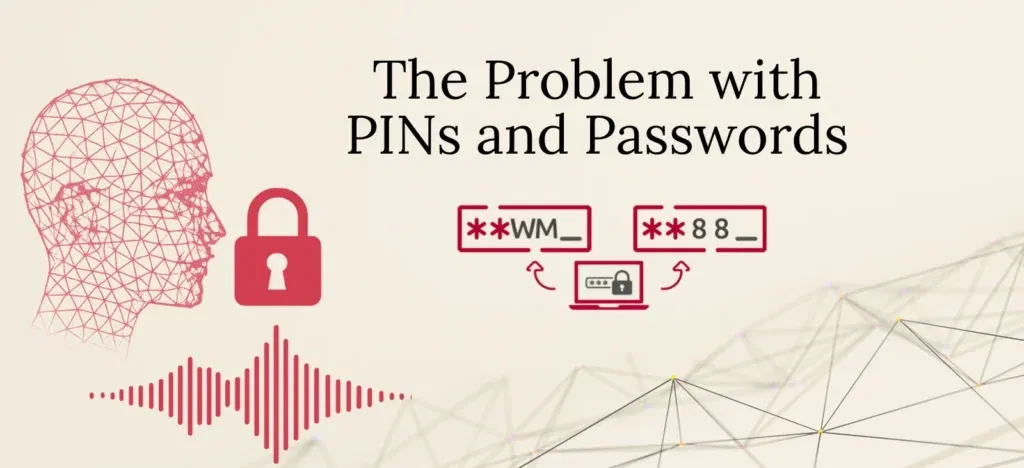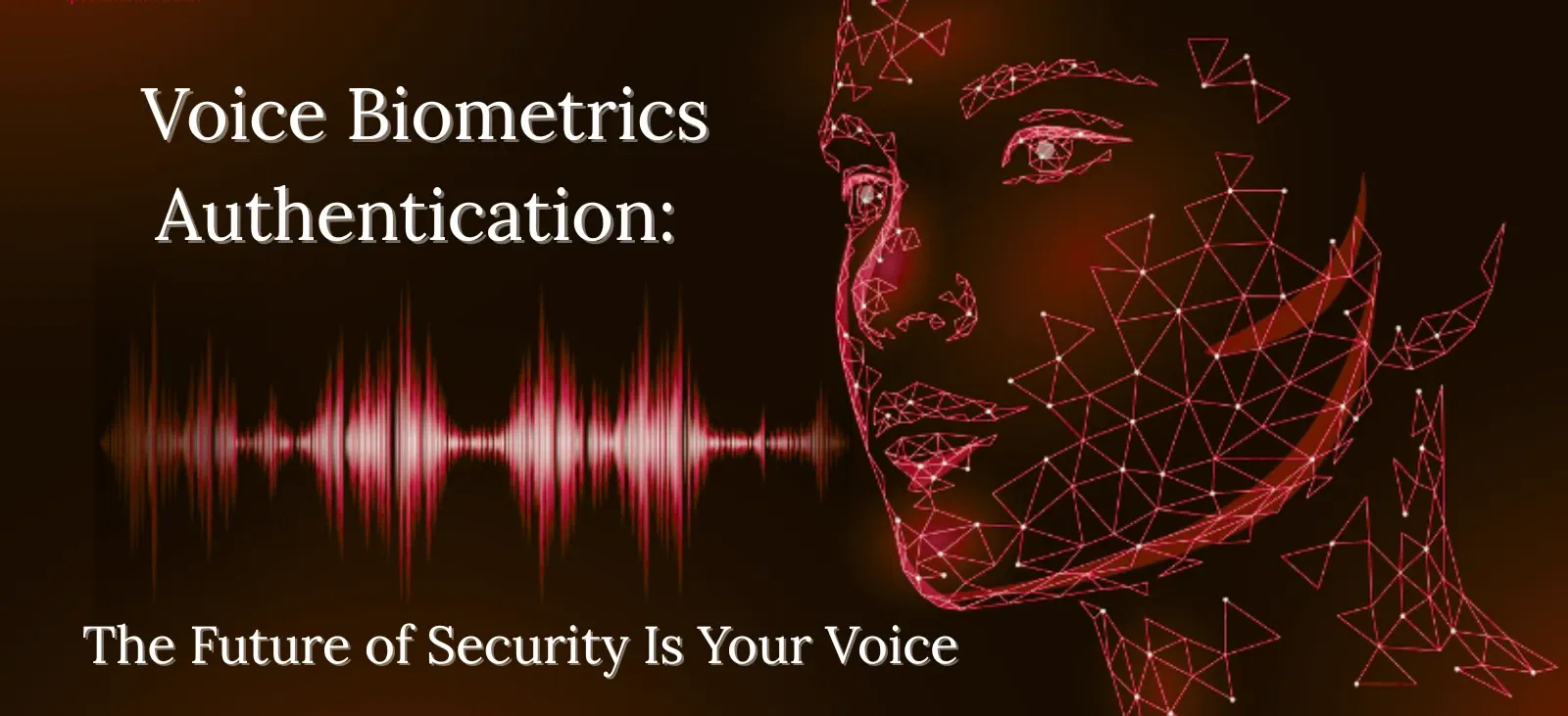Sustaining data protection policies and strategies has always been necessary, especially with the ever-growing technology industry, and admit it, the way we use passwords has been downright awful.
That said, using a mixture of letters, numbers and symbols to create a password and writing it on a sticky note or storing it in a file doesn’t help to protect sensitive data in a world of expensive cyberspace.
The world we live in has thankfully advanced to the use of biometric systems where physical features like fingerprints, faces and irises can grant us access to our online accounts. Unfortunately, voice systems, one of the incredible physical personal features, don’t always grab the limelight they deserve.
Voice biometrics authentication is the groundbreaking technology that transforms the unique qualities of your voice into a secure, unbreakable password. It’s a system that doesn’t just recognise what you say but who you are by the very sound of your voice.
This isn’t science fiction; it’s the next evolution in secure, convenient, and user-friendly authentication.
This article will delve into the mechanics of voice biometrics, explore its significant advantages over traditional passwords, and show you why “voice biometrics authentication” is assured to become the new standard for digital security.
How Voice Biometrics Authentication Works: Beyond Simple Voice Recognition
Many people confuse voice biometrics with simple voice recognition—the kind of technology that allows you to give commands to your smartphone. While both technologies focus on spoken language, they serve very different purposes.
Voice recognition is the process where verbal commands are translated into actions; for instance, “call mom” triggers the call. In contrast, voice biometrics analyses more deeply voice and the way it is spoken by someone. It aims at confirming a person’s identity by detecting measures of the person’s voice.
The way biometrics are applied is first by capturing “voiceprints” or digital signatures. In doing so, with each voiceprint arises a sequence of operations such as
Enrollment: A user interacting with voice biometrics for the first time is asked to present a certain phrase or a phrase. It is important to mold into the system at the very beginning to capture and process the user’s voice as a system, which includes:
- Physiological Qualities: When we talk about a person’s voice, we’re looking at a mix of physical and biological characteristics. This includes the voice of each person and the sound elements that are put into their personality. The voice elements undergo the systems, which are biological and genetic elements. The systems are the voice of a person, such as systems that capture voices by mic and cameras.
- Behavioral Qualities: These are the distinctive, acquired speech patterns, including a person’s accent, dialect, speed, and rhythm. The idiosyncrasies in how someone pronounces words, or even the slight pauses they make, are all part of this unique behavioral fingerprint.
Analysis: The software takes the voice recording and breaks it down into countless frequency segments. It employs advanced algorithms to assess and analyze these different vocal traits, ultimately crafting a one-of-a-kind mathematical model known as a “voiceprint.” This voiceprint is stored securely as a template rather than an audio file, so it can’t be reverse-engineered or stolen.
Verification: When a user tries to log in in the future, they will be asked to repeat a specific phrase. The system will take the voice sample and compare it to a template of a voiceprint available in the system. If the user’s sample voice features match the voiceprint template to a defined threshold, access is granted.
This is much more secure compared to the use of a traditional password. A voice password can be stolen or hacked. A voiceprint cannot be hacked, as it is a biometric characteristic.
An impersonator would be unable to play a recording of your voice as authentication due to systems identifying sound playback as a variation to sound from a voice. Capturing the sound of your voice is different from the actual sound. It requires a randomized phrase to prevent replay attacks.
The Problem with PINs and Passwords

For decades, PINs and passwords have been the preferred solution to restrict access. In as much as these methods were the most useful some time back, they are now a liability.
- Weak Security: Weak passwords and PINs are a common problem, and it is shocking to note how many individuals continue utilizing “123456” or “password” as password choices. When challenged to devise a complex password, they tend to use a mix of the same variations, which only makes it easier to fall victim to brute force and dictionary attacks.
- The Burden of Complexity: Users experience challenges due to the complete blend of symbols, numbers, and both uppercase and lowercase letters in creating a complex password. This invariably results in a productivity drain due to the need for constant password resets.
- Phishing and Social Engineering: Another password threat which is a subtype of social engineering is phishing, where a user is tricked into giving credentials by a fake site. Manipulating a user into relinquishing their password is considered social engineering.
- The Cost to Businesses: Significantly, for a business, the productivity and cash flow drain due to password management support desk operations for password resets and security breach help desk support is overwhelming.
A remarkable and complete approach to solving business password challenges focuses on voice biometrics authentication. It shifts the burden of security from the user’s memory to their unique biological traits, providing an unparalleled level of convenience and protection.
The Unprecedented Benefits of Voice Biometrics Authentication
Usage of voice biometrics serves an additional purpose in security strategy, amplifying and re-emphasizing organizational and user productivity.
For the User:
Unparalleled Convenience: There are no more difficult passwords to remember and no more tokens to carry with you—simply use your voice biometrics and log in immediately.
Improved User Experience: The interaction between you and a digital voice interface, regardless of task, whether it is logging into a mobile application, completing a transaction, or accessing a securely stored document is effortless and seamless with the voice authentication and alleviates friction.
Enhanced Security: Your voice is much harder to impersonate than a simple password. Because the system can differentiate those subtle traits and nuances in your voice, it is more difficult to commit fraud or spoofing attacks.
For the Organization:
Increased Security for Customer Accounts: Implementing voiceprint provides a good level of protection against unauthorised access and account fraud for the customer accounts. This is beneficial to businesses that deal with high volumes of sensitive and confidential customer information.
Reduced Fraud and Breaches: There will invariably be less fraud and thus fewer data breaches, as with the strong and proven protections of voice biometrics, provided that voice biometrics is also implemented with additional protections as part of a multi-factor authentication (MFA) strategy.
Simplified Compliance and Audits: The voice biometrics system offers a unique advantage of providing access logs to a system that is very easy to dispute, as it traces to the exact moment someone accesses the system. This tracking feature simplifies regulatory compliance and reporting.
Cost Reduction: The technology minimises the incidences of users retrieving passwords and thus reduces the number of calls made to the IT helpdesk, which in turn reduces IT support expenditures.
Versatility: Voice biometrics can be used on a variety of platforms and devices, including smartphones, tablets, computers, and even smart speakers, offering a consistent and secure authentication experience.
Where Your Voice Unlocks the World
Voice biometrics authentication is advancing in various sectors and transforming the way we protect our information and engage with technology.
- Financial Services: They are starting to use voice biometrics to authenticate clients on the telephone, meaning there are no more security questions and no account numbers provided. This makes the customer service experience easier for the client with added security in the authentication of identities.
- Healthcare: In healthcare, voice biometrics could be used to secure patient history and ensure access or assurances that the information is only going to legal entities, doctors and administrators.
- Call Centers: Call centers use or are beginning to implement voice biometrics authentication for phone calls to verify a caller’s identity so that they are able to eliminate wait times and provide authentication before allowing aspects of the customer experience to begin, thus preventing any fraudulent phone calls.
- Workplace Security: Companies are using voice biometrics to provide fast and secure access to company networks/applications and physical locations, all the while providing overall workplace security.
Unlocking the Future with Voice Biometrics
As we move towards a more connected and data-driven world, the demand for secure and seamless solutions only increases. The password, which used to be the backbone of digital security, has now turned into a bit of a liability.
Voice biometrics authentication is not a fad; it is a paradigm shift in how we view security. We can use our most unique and personal biometric trait, our voice, to develop safer, easier, and more user-friendly digital experiences for everyone.
For those interested in creative and design skills, enrolling in a UI/UX course in Gurgaon with Digital CourseAI can also open new career opportunities in the digital space. Adopting innovative security methods like voice authentication helps future-proof our digital identities.
The future of security is no longer an inconvenient string of random characters; it is simply the sound of your voice.
Also Read: AI App: Future-Proofing Business with Intelligent Solutions

